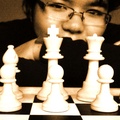This is a personal opinion that may be of use for the evaluation of the title of this piece. It was motivated by Kristine Haenschke’s article “Do the Kenjinkai Have a Future?” – posted on this Website – in which the author describes an event celebrated in March ’09. I eagerly await to read the author’s conclusions once they’re published.
I’m over 30 years old. Pushed by my parents, from the time I was a little boy I began taking part in the activities of several prefectural associations. Like every child, I had neither the means nor the right to argue; it was a question of “do it because I say so,” as it happens with everyone. (If I had a kid, things would probably work out that way as well, though with different tonalities.)
The “good” thing about these activities was that I received gifts; I didn’t know what they were for, but I was happy to accept them (as proof of the materialism that had been ingrained in us). The more packages the better, regardless of the fact that they contained glass vases, towels, fruits, baskets, or merchandising for some Nikkei business, so that none of those things would be any good for me to play with.
As I grew older, life took us – the nuclear family – away from Peru. When we returned, reintegration within society was slow – the process of discovery and learning – while within the community it was even slower. It was strange (there was a feeling of uncertainty) to see familiar faces – seemingly from a distance – that were at the same time unfamiliar because I didn’t even know their names. (Although I don’t know almost anybody’s name … For names, like for faces, my brain makes use of certain gray matter that hasn’t been fortified, yet.)
I noticed that feeling of foreignness on my parents’ faces, for they had to make use of their accelerated memory – at least during the first year following our return (almost 15 years ago) – whenever they came in contact with their “old” friendships and other people. Additionally, they had to try to “fit into” a system-country that was just beginning to recover from social destruction (and that more than a decade later has fallen into the moral destruction in which we now live).
For some reason that will remain unclear, I spent my adolescence away from the Nikkei community, away from Peru – maybe so as not to fight with my peers or to stress them out with apparent changes that to this day are hard for me to perceive as a kind of “aura” (except in rare instances). Those were people who grew up together, knowing one another – whereas I was alone – hanging out at the local establishments of the community while taking part in and organizing its activities. I couldn’t go to such places because there was no organized Nikkei community in Panama, where we lived for almost 10 years.
The most I got to do in Peru during that time, while still in my pre-teen years, was to spend two or three summers of “useful vacations” in Lima in order to “see” the family … I was bored and would remain so for two and a half months, possibly because I was in a strange environment – despite having grown up in it – possibly because it was the same thing I’d done the previous summer, or possibly because that’s how I am. (It’s better to give the benefit of the doubt.) Neither my social identification nor my sense of belongingness was developed at that time, as I found myself in a city just coming out of total depression and that, to this day, has not gotten rid of its complexes and gratuitous stereotypes.
THE RETURN
Once we got settled in Lima, I began my university studies. I was never understood at the university, except by one or two people – but they ended up elsewhere, luckily working in publicity, where people’s mindset is remarkably open even though it’s a more closed circle than that of architecture, which I continue practicing on a friendship basis and on a tiny scale (houses, architectural distribution, remodeling).
During that period of approximately 10 years, my participation in the Kenjinkai was sporadic, being restricted to events celebrating immigration centennials – such as helping to organize institutional exhibitions – and annual commemorations that involved something related to design (whether graphics or spatial design).
Also during that period, I suggested many times that the institution should have a Web presence, should discuss other activities and meeting places, that it should open up to work in tandem with other Nikkei institutions so as to fortify its presence and longevity … However, those changes didn’t take place because some called them either outlandish or radical, and because there was no real desire to change. (For that reason, to this day, there haven’t been any noticeable changes.)
CHANGES
The philosophy of change must be always present because whatever isn’t in constant flux, dies. Those who oppose change without understanding it are about to become extinct … Even though, unfortunately, that attitude has become a sort of pandemic.
At present, many Kenjinkai seem to be slowly changing, reinventing themselves in accordance with their younger members. On the other hand, there are others that keep on doing the same things they’ve been doing for the last three decades; their sluggish pace losing steam because it lacks new energy and motivations to recharge it. When they finally stop moving, the others will be so far ahead that it will be impossible to catch up with them, especially in our fast-paced present. They come up with plenty of words to keep justifying their inert attitude; the power to effect changes seems to be nonexistent because even the act of thinking is too tiring.
Yet, the institutional ways of acting and thinking should be the exact opposite of what they are because today’s teenagers and young people have more personal interests than previous generations. That’s what happens to society following every generational change, in addition to the fact that things are moving at a very fast speed. So, how many of those “pillars of the future” will skip their Sunday online chat to take part in contests in which the prize will be something for the home and not something of personal interest to him, while the game itself will be the same game played the previous season?
How many will be willing to spend their time the following year, even if it’s on a Sunday, doing the same things when on the Internet everything changes each month, when technological gadgets lose their novelty in less than four months, when there are always better films available at movie houses, more shopping malls, and more media saturation for what’s fashionable?
A Kenjinkai cannot exist forever if it fails to reinvent itself, if it doesn’t have a breath of “modernity,” of technology, or of what it sorely lacks – youth participation. In fact, the invariable justification for the realization of activities is the “participation of young people” … who will be enticed by what?
Stagnation is denied much like old age. How can they entice and catch the attention of those who are surrounded by so many things to which they can dedicate their free time? There is a generation gap and the “bridge” for integration is the same as always: one learns by example. Yet, the focus drifts to those households where it is decided beforehand how their monthly salary will be spent, something they’ll do once it’s available instead of giving their time to activities taking place at a Kenjinkai.
© 2009 Victor Nishio Yasuoka






